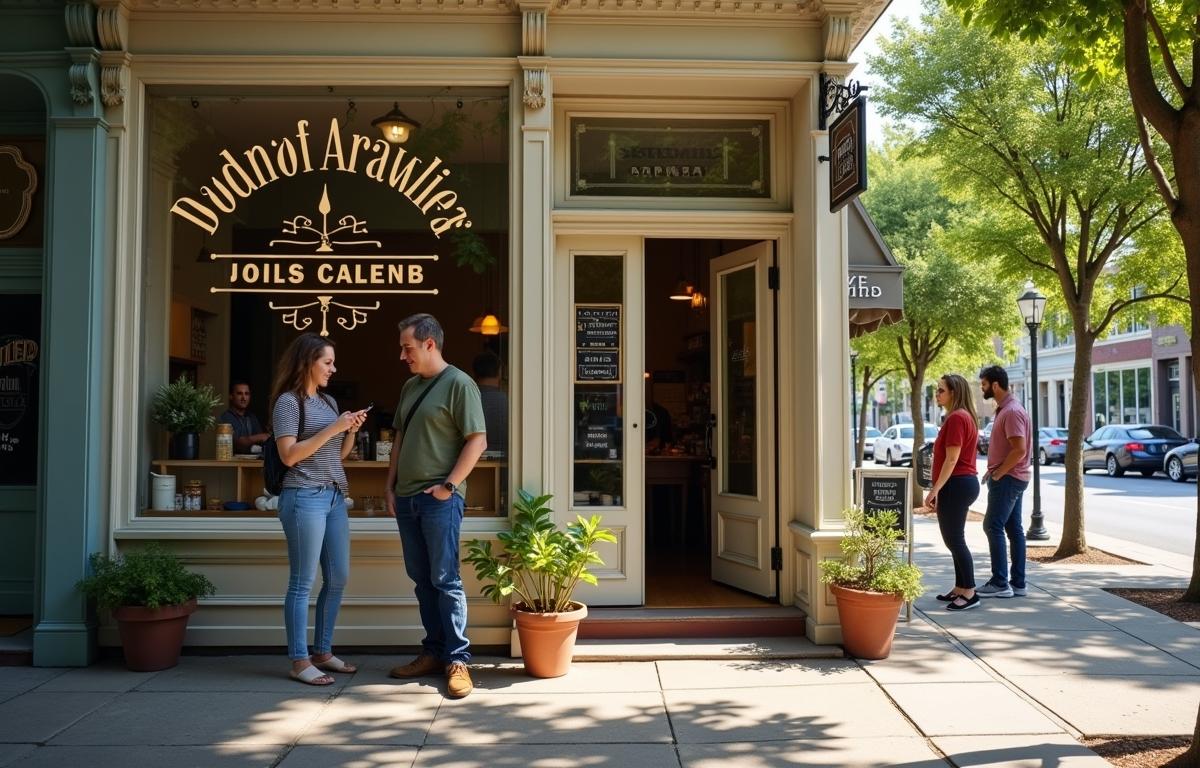Local SEO Secrets Every Small Business Owner Should Know
Understanding how local SEO can boost your small business is essential for growth. These techniques go beyond generic optimization, because they help your store or service stand out among neighborhood competitors. Whether you run a cozy café or a niche boutique, strategic steps can boost your standing in local search optimization and keep you ahead of the curve.
Boost Visibility with Google My Business Listing
Creating a stellar digital presence often starts with your Google My Business listing. This hub offers opportunities for reviews, photos, and updated details that encourage potential customers to pay you a visit. Regularly updating your hours and posting fresh images can reassure visitors that you’re active and dedicated to quality. For smooth local listing management, ensure your address, phone number, and operating hours stay accurate.
Leverage Customer Engagement Strategies
Responding to questions and reviews shows that you care about building trust in your community. This approach also fuels higher Google My Business tips because search engines value active engagement. Encourage clients to share their experiences, and never be afraid to address concerns or negative feedback thoughtfully.
Master NAP Consistency for Credibility
Keeping your Name, Address, and Phone number consistent across every online platform is a must for local businesses. This practice, known as NAP consistency, helps search engines connect the dots between your website, social channels, and local business directories. When everything matches, your brand appears more reliable, which can boost map pack ranking in localized search results.
Local Citation Building Tactics
Spread your business details across trusted online directories to create local citation building opportunities. Double-check for typos or outdated information before adding your listing. This practice strengthens local SEO strategies and supports your efforts to secure better positions on Google Maps ranking pages.
Optimize Your On-page Factors
On-page SEO for local is not just about inserting a few city or neighborhood names. Integrate relevant local keyword research without cramming them into awkward phrases. Instead, craft helpful content that speaks to your community’s needs and interests. This method also improves user experience and can encourage visitors to stay longer on your site, signaling to search engines that you offer genuine value.
Local Competitor Analysis for Ideas
Observe rivals in your area and see what type of content resonates with their audience. Local competitor analysis offers insights on which topics gain traction and where you can fill gaps. Maybe people in your neighborhood want a detailed guide to local events or a breakdown of local trends. Address those needs and refine your pages to meet them.
Harness the Power of Online Reviews
A solid online reviews strategy can sway potential customers faster than any fancy ad campaign. People crave honest feedback from others who have already experienced your service or product. Displaying recent testimonials lets visitors know you have satisfied clients who trust your brand. Plus, regular online reviews management encourages engagement, which helps your local backlink strategies by making your business seem more authentic.
Encouraging Positive Feedback
Make it simple for clients to leave feedback, whether by email reminders or onsite prompts. When positive reviews pour in, highlight them to reassure new visitors. If you receive negative comments, address them politely to show potential customers you value transparency. This tactic can improve map pack ranking because search engines notice when you handle reviews in a professional, consumer-friendly manner.
Step Up Your Local Content Marketing
Turning everyday community happenings into engaging resources can position your brand as a local neighbor. Local content marketing involves writing blog posts, producing short videos, or sharing photos of your surroundings. People might search for nearby events, so include references to your neighborhood. Localized content creation helps your pages match those hyperlocal searches, boosting both traffic and brand recognition.
Geo-targeting Techniques
If you serve multiple neighborhoods, develop geo-targeted keywords for each area. This approach ensures you’re speaking directly to local customers who will find your business relevant. Think about location-based advertising that pinpoints people near your store or service. These tactics can create extra foot traffic and spark more interest in your neighborhood.
Strengthen Your Local Backlinks
Obtaining links from trusted websites in your area can amplify your search visibility. Local backlinks indicate to search engines that your brand is appreciated or referenced by other credible sources. You can partner with local organizations, sponsor community events, or publish useful guides on community websites to attract valuable links.
Building Relationships for Links
Creating strong connections with local bloggers or news outlets helps your brand’s story reach a wider audience. You might share expertise about local search optimization or tips on upcoming events. People love learning from sources that feel in tune with their community. This relationship-building fosters goodwill and can boost your local link building efforts in an authentic, natural way.
Focus on Mobile Search Optimization
These days, most users rely on their smartphones to find nearby shops, restaurants, or services. Improving load speed, ensuring mobile-friendly design, and displaying critical details at a glance are essential steps. Simple navigation and clear calls-to-action make sure visitors don’t bounce away. This approach to mobile optimization for local SEO signals to Google that your site is responsive and user-friendly.
Encouraging Fast User Actions
When potential customers land on your mobile pages, they need immediate access to your address, phone number, and menu or product offerings. Simplify your layout so they can call you or get directions without hassle. By reducing friction, you improve customer satisfaction and possibly your local SEO metrics.
Explore Schema Markup for Local SEO
Implementing schema markup for local SEO provides search engines with structured data about your business. It lets bots quickly identify details like your operating hours, type of service, and geographic coordinates. Adding this code can result in rich snippets that grab attention in search results. People will see star ratings, price ranges, or event dates, making them more likely to visit your pages.
Tracking Your Markup Impact
Keep an eye on analytics tools to gauge how your schema markup for local businesses influences clicks and engagement. If your pages see better visibility and higher click-through rates, it’s a sign that your structured data is working. Regular local SEO audits can help detect any errors in your code or updates needed for improved performance.
Improve Your Map Pack Ranking
Securing a spot in the local map pack is prized because it gives prime exposure at the top of search results. Work consistently on NAP consistency and gather quality reviews to reinforce your relevance. Meanwhile, encourage satisfied customers to add pictures of your location and tag them with your brand name. This extra visual proof can intrigue new searchers glancing at local SERP analysis indicators.
Hyperlocal Marketing Touchpoints
Attending neighborhood events and forging relationships with nearby groups sets you apart. Hosting small gatherings or giving back to the community can build word-of-mouth advertising. These hyperlocal marketing efforts often show authenticity, making your brand memorable when people look for local services.
Take Advantage of Voice Search for Local
Voice assistants are common in homes and on smartphones. People now say queries like, “Where’s the best taco place near me?” Instead of typing formal phrases, they ask natural-sounding questions. To capture that traffic, incorporate conversational keywords into your content. Voice search for local queries thrives on direct answers and user-friendly location info.
Making Content Conversational
Try weaving question-and-answer sections into your articles. For instance, “Looking for budget-friendly dinner spots in Midtown?” then provide direct responses. This format helps voice assistants match your content to spoken inquiries, boosting your visibility among nearby consumers.
Keep an Eye on Social Media for Local SEO
Platforms like Facebook, Instagram, or LinkedIn can raise your local profile. Maintaining active business accounts, showcasing local events, and interacting with area influencers can spark more interest. That boosted interaction may direct new visitors toward your site, offering additional benefits for local search optimization. Even small bits of content shared regularly can keep you in front of potential customers.
Local Listing Management Through Social Channels
Ensure your pages on social platforms match your name, address, and phone data exactly. Inconsistent info can weaken your local SEO performance. Syncing every detail across platforms creates a unified brand presence. It reassures people that your store hours, contact info, and directions are accurate.
Combine Location-based Advertising with Targeted Strategies
Digital ads can reach local consumers directly if you set up geotargeting techniques. Tailor ads to people in certain zip codes or near certain landmarks. By targeting smaller areas, you won’t waste budget on irrelevant clicks. This path brings you closer to customers looking for something near them, boosting potential foot traffic.
Balancing Paid and Organic Efforts
While ads can lure new traffic quickly, organic methods create long-term stability. Strive for a healthy mix of location-based advertising and organic optimization. Your site benefits from both short-term promotion and lasting authority.
Staying consistent with these steps can help you capture more local traffic and earn a trusted presence in your community. When you combine well-structured on-page materials, quality citations, and genuine engagement, you create a foundation that drives steady growth in local searches. By paying attention to shifts in technology, like voice search or new mobile trends, you’ll stay agile and discover even more ways to bring in nearby customers.







0